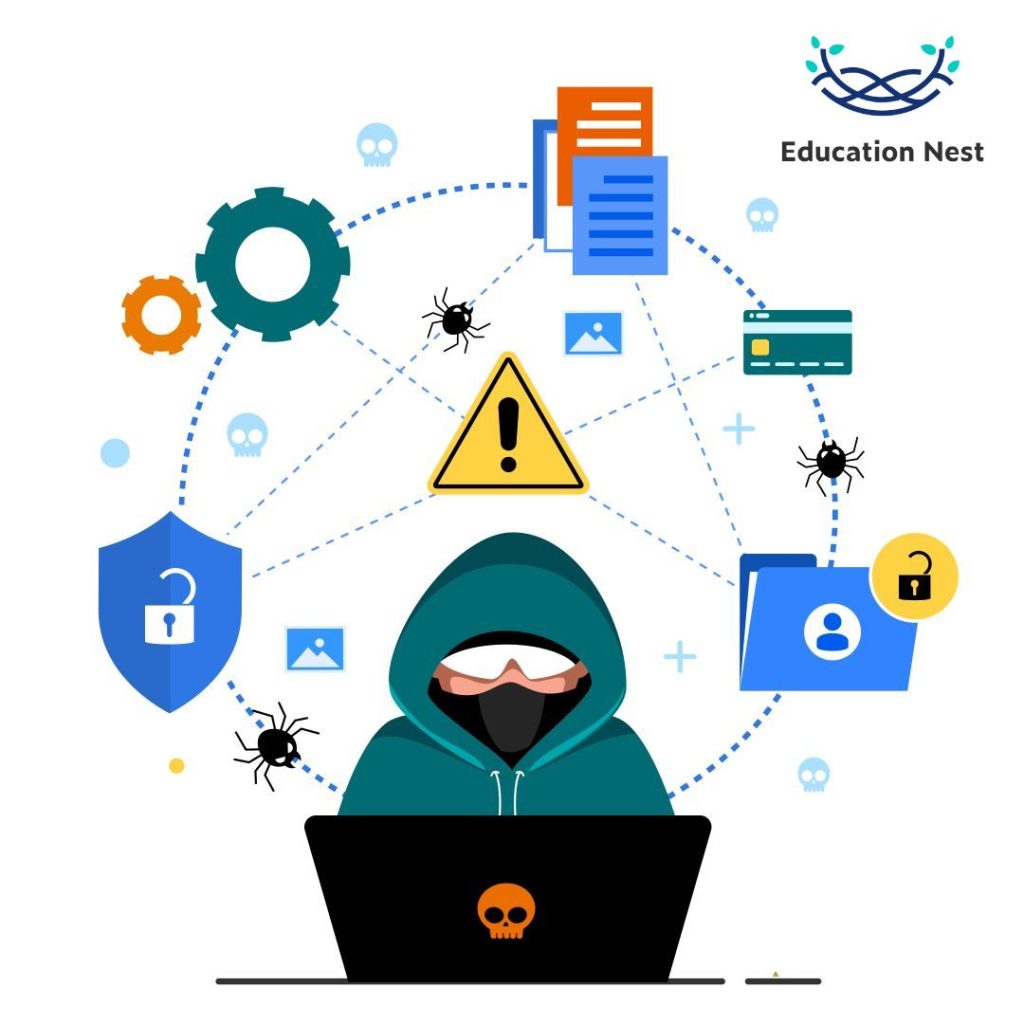To “sniff” a network is to hack all the data packets traveling through it, either with a computer program or a hardware device. In system hacking, a sniffing attack is a type of denial-of-service attack that works by sniffing or capturing packets on the network and sending them over and over to a victim machine or sending them back to the sender with changes. Sniffers are often used in system hacking as a way to look at traffic patterns when it would be bad to do more damaging and invasive attacks.
In this blog, we will talk about what a sniffer is, the various types of sniffer attacks, and how you can detect them in your networking environment. Also, we’ll talk briefly about some of the most popular sniffing tools on the market today.
Let’s begin by breaking down the difference between spoofing and sniffing.
What does “spoofing” mean?
Spoofing is a type of scam in which a criminal changes an email address, display name, phone number, text message, or website URL to make it look like a known, trusted source. Changing just one letter, number, or symbol in a message can make it look real at first glance. This is called “spoofing.”
For example, you might get an email that looks like it came from HotstarDisney but is really from a scammer using the fake domain name “HotstarDisney.”

What is sniffing?
“Sniffing” is the act of intercepting and monitoring network traffic. This can be accomplished with software that records all data packets that pass through a specific network interface or with hardware devices designed specifically for this purpose.
Sniffing Attack: What Is It?
An attacker conducts a sniffing attack when he or she uses a packet sniffer to intercept and read sensitive data passing through a network. These attacks frequently target unencrypted emails, login credentials, and financial information.
In order to take control of a target’s computer or other devices, attackers may also use sniffing attack tools and packet sniffers to insert malicious code into otherwise harmless data packets.
Examples of a sniffing attack
Here are some examples of sniffing attacks:
- Spoofing attacks
- DNS poisoning
- JavaScript card sniffing attacks
- DHCP attacks
Also Read:
Everything You Need to Know About Cybercrime: Examples, Types, and Cases in India
Sniffing: Active vs. Passive
There are two types of sniffing techniques: active and passive.
| Passive sniffing | Active sniffing |
| In a passive sniffing attack, the hacker just watches the traffic going through a network without doing anything else. This kind of attack can help gather information about targets on a network and the kinds of data they are sending, such as login credentials and email messages. It’s also less likely to raise suspicion than other types of attacks because it doesn’t mess with the systems it’s aimed at. | This includes flooding the switch’s content address memory (CAM) table, which sends legitimate traffic to other ports. The hacker can then watch what’s going on with the switch’s traffic. Attacks that use active sniffing include spoofing, DNS poisoning, DHCP attacks, MAC flooding, MAC spoofing, and so on. |
.
There are many types of sniffing attacks, such as:
LAN Sniff: The sniffer attacks the internal LAN and scans the entire IP to get access to live hosts, open ports, server inventory, etc. In LAN sniffing, a port-specific vulnerability attack takes place.
TCP Session Stealing: TCP session stealing is used to track and get information about traffic between the source IP address and the destination IP address. Hackers take everything, like the port number, the type of service, the TCP sequence numbers, and the data.
Application-level sniffing: Attacks are made on the applications running on the server in order to plan an attack on that application.
Protocol Sniff: Sniffer attacks depend on the type of network protocol that is being used. Protocols like ICMP, UDP, Telnet, PPP, DNS, etc., as well as other protocols, could be used.
ARP Sniff :ARP Based on the data collected to make a map of IP addresses and the MAC addresses that go with them, poisoning attacks or packet spoofing attacks can happen.
Web password sniffing is when sniffers steal HTTP sessions that users create to get the user ID, password, and other private information.
Sniffing tools
There are a wide variety of applications for them. Here is a list of a few sniffing tools that are widely used in the technology market.
- BetterCAP is a powerful, flexible, and portable tool that can be used to perform different types of MITM attacks on a network, change HTTP, HTTPS, and TCP traffic in real time, sniff for credentials, and do much more.
- Ettercap is a full set of tools for man-in-the-middle attacks. It can sniff live connections, filter content on the fly, and do a lot of other cool things. It lets you break apart many protocols both actively and passively, and it has many features for network and host analysis.
- Tcpdump is a well-known packet analyzer that can be run from the command line. It lets you intercept and look at TCP/IP packets and other packets as they travel over the network. It can be found at www.tcpdump.org.
- WinDump is a version of the popular Linux packet sniffer tcpdump for Windows.
- Dsniff is a set of tools designed to do sniffing with different protocols in order to catch passwords and show them. Dsniff is made for the Unix and Linux platforms, and Windows doesn’t have a full version of it.
- EtherApe is a Linux/Unix tool that shows connections coming into and going out of a system in a graphical way.
Detecting a Sniffer on Your Network
To find out if there is a sniffer on your network, look out for the following signs. If you see any of these, it means there is a sniffer on your network.
1. “Strange traffic” is any kind of transmission that doesn’t make sense, like phone calls you don’t recognize, strange file transfers, or emails from people you don’t know. There is a lot of strange traffic.
2. Not having the right firewall: A dedicated firewall that is not shared with other networks in your organization is one way to protect against sniffing attacks.
3. MAC spoofing is the act of changing the Media Access Control (MAC) address that is assigned to your network interface card (NIC). Most of the time, this is done on purpose so that it can be used on a different network.
Conclusion
With the information in this blog, you now know what sniffers are, their various forms, and how they can be found. Now you can start looking for sniffers on your network and take steps to stop them. You can also find out if someone is sniffing by using a good firewall and protocols that are encrypted.
